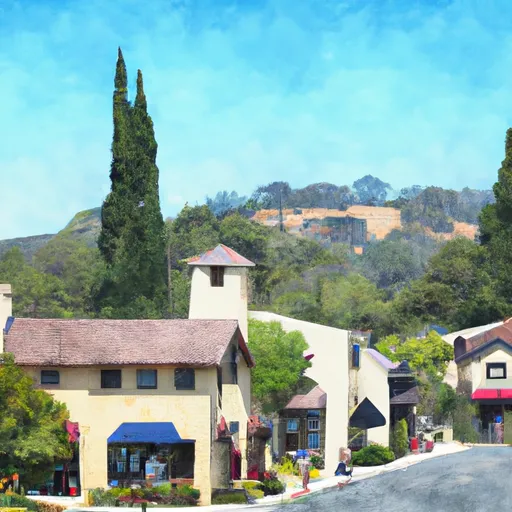-
 Snoflo Premium
Snoflo Premium
Get unlimited access to all our content
With no Ad interruptions! - Start Your Free Trial Login with existing account
Carmel-Valley
Eden Index
Climate
9.8
•
Recreation
5.6
•
Community
2.0
•
Safeguard
6.4/10

Carmel-Valley is a small, unincorporated community located in Monterey County, California. The climate in Carmel-Valley is mild with temperatures ranging from the 50s to 70s year-round. The area is known for its scenic beauty and is located near the Carmel River, which provides a source of hydrology constituents for the region. Outdoor recreation opportunities in Carmel-Valley include hiking, biking, horseback riding, and golfing. The area is also home to many fine wineries and restaurants. Visitors can enjoy the scenic beauty of the region while participating in a wide range of outdoor activities. Overall, Carmel-Valley is a great destination for those who enjoy the great outdoors and want to experience the natural beauty of California.
What is the Eden Index?
The Snoflo Eden Index serves as a comprehensive rating system for regions, evaluating their desirability through a holistic assessment of climate health, outdoor recreation opportunities, and natural disaster risk, acknowledging the profound impact of these factors on livability and well-being.
Climate Health Indicator (CHI): 9.8
Carmel-Valley receives approximately
625mm of rain per year,
with humidity levels near 62%
and air temperatures averaging around
14°C.
Carmel-Valley has a plant hardyness factor of
9, meaning
plants and agriculture in this region tend to thrive here all year round.
By considering the ideal temperature range, reliable water supplies, clean air, and stable seasonal rain or snowpacks, the Climate Health Indicator (CHI) underscores the significance of a healthy climate as the foundation for quality living.
A healthy climate is paramount for ensuring a high quality of life and livability in a region, fostering both physical well-being and environmental harmony. This can be characterized by ideal temperatures, reliable access to water supplies, clean air, and consistent seasonal rain or snowpacks.
Weather Forecast
Streamflow Conditions
Central California Coastal
Area Rivers
Central California Coastal
Snowpack Depths
Central California Coastal
Reservoir Storage Capacity
Central California Coastal
Groundwater Levels
Recreational Opportunity Index (ROI): 5.6
The Recreational Opportunity Index (ROI) recognizes the value of outdoor recreational options, such as parks, hiking trails, camping sites, and fishing spots, while acknowledging that climate plays a pivotal role in ensuring the comfort and consistency of these experiences.
Access to outdoor recreational opportunities, encompassing activities such as parks, hiking, camping, and fishing, is crucial for overall well-being, and the climate plays a pivotal role in enabling and enhancing these experiences, ensuring that individuals can engage in nature-based activities comfortably and consistently.
Camping Areas
| Campground | Campsites | Reservations | Toilets | Showers | Elevation |
|---|---|---|---|---|---|
| Andrew Molera State Park | 24 | 216 ft | |||
| White Oaks | 7 | 4,012 ft | |||
| Escondido | 9 | 2,165 ft | |||
| Fremont Peak State Park | 21 | 2,768 ft | |||
| Monterey Pines RV Military | None | 134 ft | |||
| Monterey County Fairgrounds RV | None | 72 ft | |||
| Pfeiffer Big Sur State Park | 158 | 240 ft | |||
| Laguna Seca | 172 | 762 ft | |||
| Bottchers Gap | 11 | 1,996 ft | |||
| Arroyo Seco | 40 | 914 ft |
Nearby Fishing
Catastrophe Safeguard Index (CSI):
The Catastrophe Safeguard Index (CSI) recognizes that natural disaster risk, encompassing floods, fires, hurricanes, and tornadoes, can drastically affect safety and the overall appeal of an area.
The level of natural disaster risk in a region significantly affects safety and the overall livability, with climate change amplifying these risks by potentially increasing the frequency and intensity of events like floods, fires, hurricanes, and tornadoes, thereby posing substantial challenges to community resilience and well-being.
Community Resilience Indicator (CRI): 2.0
The Community Resilience Indicator (CRI) recognizes that education, healthcare, and socioeconomics are crucial to the well-being of a region. The CRI acknowledges the profound impact of these elements on residents' overall quality of life. By evaluating educational resources, healthcare accessibility, and economic inclusivity, the index captures the essential aspects that contribute to a thriving community, fostering resident satisfaction, equity, and social cohesion.

